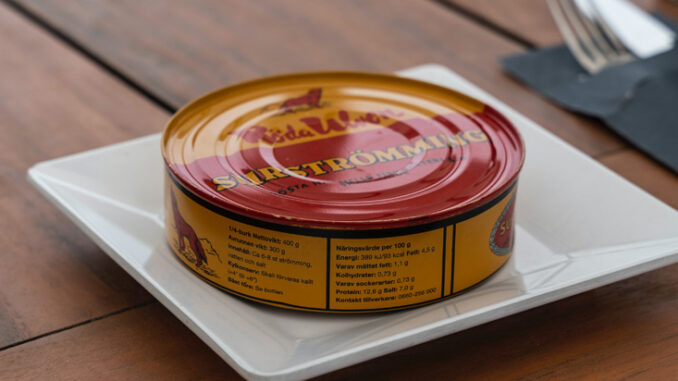
Surströmming is a traditional Swedish delicacy that is made from fermented Baltic herring. It is considered to be one of the most pungent foods in the world due to its strong, distinctive smell. While Surströmming has been consumed in Sweden for centuries, it is often an acquired taste for those who are not used to its unique flavor and aroma.
When it comes to eating Surströmming, there are a few traditional ways that Swedes typically prepare and serve the dish. One common method is to eat it with soft Swedish flatbread, boiled potatoes, and a generous dollop of sour cream. Some people also like to add finely chopped onions and tomatoes to the mix.
To eat Surströmming, you should first open the can in a well-ventilated area, such as outdoors. The smell can be overpowering, so it’s important to be prepared. Some people even choose to wear a mask or cover their nose and mouth with a cloth.
Once the can is open, you can take out the fermented herring and place it on a plate. Many people like to eat the fish with the flatbread and other accompaniments, but some prefer to eat it straight out of the can. It’s up to personal preference.
When it comes to the taste and smell of Surströmming, it’s difficult to describe. Some people say it tastes like a salty, sour fish, while others describe it as almost sweet. The texture of the fish can be quite soft and mushy due to the fermentation process.
As for the smell, Surströmming has a strong, pungent odor that can be likened to a mix of rotten eggs, vinegar, and raw sewage. While this may sound off-putting, many Swedes find the smell to be part of the overall experience and enjoy it.
For first-timers, it’s best to start with a small amount of Surströmming and work your way up from there. The taste and smell can be quite intense, so it’s important to go slowly and not overwhelm your senses. And if you find that you don’t like it, that’s okay too. Surströmming is definitely not for everyone, but for those who enjoy it, it’s a true taste of Swedish tradition
